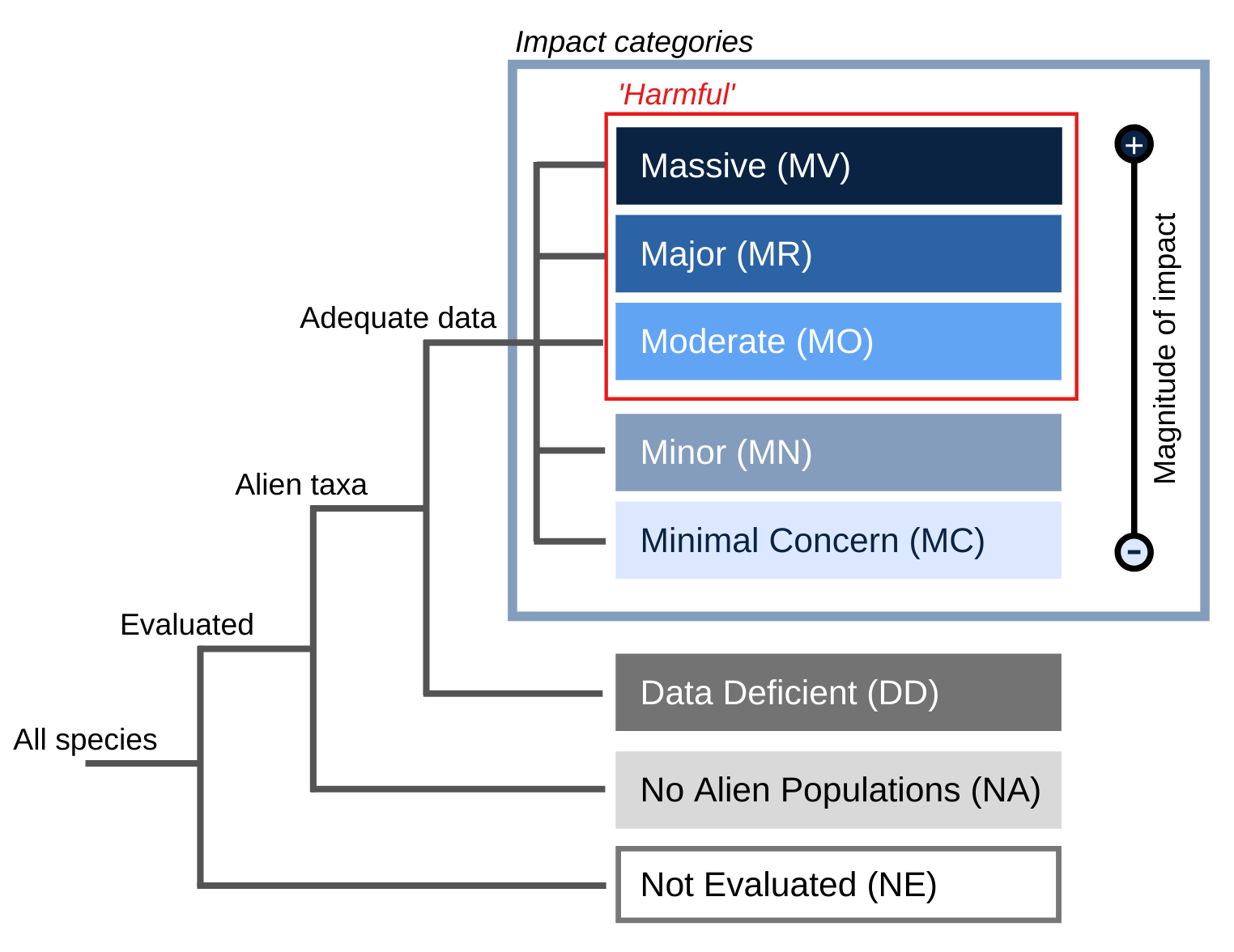Kingdom
Phylum
Class
Order
Family
Animalia
Chordata
Actinopterygii
Perciformes
Centrarchidae
- General
- Distribution
- Impact
- Management
- Bibliography
- Contact


Common name
lobina negra (Spanish, Mexico), achigan (French), American black bass (English), green bass (English), bas dehanbozorg (Farsi), bass (English), bass wielkgebowy (Polish), black bass (English), bolsherotnyi amerikanskii tscherny okun (Russian), achigã (Portuguese), achigan à grande bouche (French), bol'sherotyi chernyi okun' (Russian), forelbaars (Dutch), forellenbarsch (German), green trout (English), huro (Spanish), khorshid Mahi Baleh Kuchak (Farsi), lakseabbor (Norwegian), largemouth black bass (English), northern largemouth bass (English, Canada), ostracka (Czech), großmäuliger Schwarzbarsch (German), okounek pstruhový (Czech), Ørredaborre (Danish), perche noire (French), perche truite (French), stormundet black bass (Danish), tam suy lo ue (Cantonese), zwarte baars (Dutch), lobina-truche (English, Dominican Republic), buraku basu (Japanese), biban cu gura mare (Romanian), perca Americana (Spanish), persico trota (Italian), isobassi (Finnish), perche d'Amérique (French), stormundet ørredaborre (Danish), bas wielkogeby (English, Poland), okuchibasu (Japanese), largemouth bass (English), fekete sügér (Hungarian), ostracka lososovitá (Slovak), Öringsaborre (Swedish)
Synonym
Labrus salmoides , Lacepède, 1802
Huro salmoides , (Lacepède, 1802)
Aplites salmoides , (Lacepède, 1802)
Perca nigricans , (Cuvier, 1828)
Micropterus salmoides , (Lacepède, 1802)
Huro nigricans , Cuvier, 1828
Grystes megastoma , Garlick, 1857
Huro salmoides , (Lacepède, 1802)
Aplites salmoides , (Lacepède, 1802)
Perca nigricans , (Cuvier, 1828)
Micropterus salmoides , (Lacepède, 1802)
Huro nigricans , Cuvier, 1828
Grystes megastoma , Garlick, 1857
Similar species
Summary
Micropterus salmoides (bass) has been widely introduced throughout the world due to its appeal as a sport fish and for its tasty flesh. In some places introduced Micropterus salmoides have affected populations of small native fish through predation, sometimes resulting in the their decline or extinction. Its diet includes fish, crayfish, amphibians and insects.
Species Description
Dorsal spines (total): 10-10; Dorsal soft rays (total): 12-14; Anal spines: 3-3; Anal soft rays: 10-12; Vertebrae: 30-32. Mouth large; maxillary extending beyond the eye. Pelvic fins not joined by a membrane. Green to olive dorsally, milk-white to yellow ventrally, with a black band running from the operculum to the base of the caudal fin. Caudal fin rounded. Caudal fin with 17 rays .\" (FishBase, 2003)
Notes
Micropterus salmoides is the most popular game fish in the United States; a recreational fishery that is worth millions of dollars. Preyed upon by herons, bitterns, and kingfishers. Excellent food fish .\" (FishBase, 2003)
Lifecycle Stages
Spawning takes place spring to summer or when temperature reaches 15°C. Adults mate between the age of 5-12 years (FishBase, 2003).
Uses
Fisheries; minor commercial, aquaculture; commercial, gamefish, aquarium: show aquarium. (FishBase, 2003)
Habitat Description
Inhabits clear, vegetated lakes, ponds, swamps. Also in backwaters and pools of creeks and rivers. Prefers quiet, clear water and over-grown banks.\" (FishBase, 2003). Largemouth bass are highly adaptable fish, able to thrive in virtually every warm-water habitat, from small creeks to large rivers to huge reservoirs. About the only thing that limits them is cold annual water temperatures (<10C) or low pH (<6), both of which presumably inhibit reproduction, since adults can survive in both habitats, but populations will not persist.
Reproduction
The male which becomes aggressive and territorial builds the nest on muddy bottoms of shallow water. A female may spawn with several males on different nests. The male guards and fans the eggs. (FishBase, 2003)
Nutrition
Food habits of Micropterus salmoides are very diverse, but mainly consist of fish or invertebrates. Sometimes cannibalistic. Does not feed during spawning; as well as when the water temperature is below 5°C and above 37°C ( FishBase, 2003). Well-known communities involve either LMB and bluegill (Lepomis machrochirus) or LMB and shad (Dorosoma spp). Much work has been done on the dynamics of these two communties. The LMB-BG communities tend to be more in the northern natural lakes, whereas the LMB-shad communities are more common in large southern reservoirs.
Pathway
This species has been an important sport fish for many years and as such has been stocked widely in areas where it is nonindigenous. (Fuller, 1999)Fishing and Angling
Principal source: FishBase, 2005. Species profile Micropterus salmoides Largemouth bass
Compiler: IUCN/SSC Invasive Species Specialist Group (ISSG)
Review: Dr. Steve Sammons M. Department of Fisheries and Aquaculture, Auburn University. USA
Publication date: 2006-04-11
Recommended citation: Global Invasive Species Database (2025) Species profile: Micropterus salmoides. Downloaded from http://www.iucngisd.org/gisd/speciesname/Micropterus+salmoides on 14-10-2025.
General Impacts
Introduced bass usually affect populations of small native fishes through predation, sometimes resulting in the decline or extinction of such species (Minckley 1973, in Fuller, 1999). Studies have shown that largemouth bass are capable of displacing native species, even predatory species such as northern pike.(USGS-CERC, 2004)









